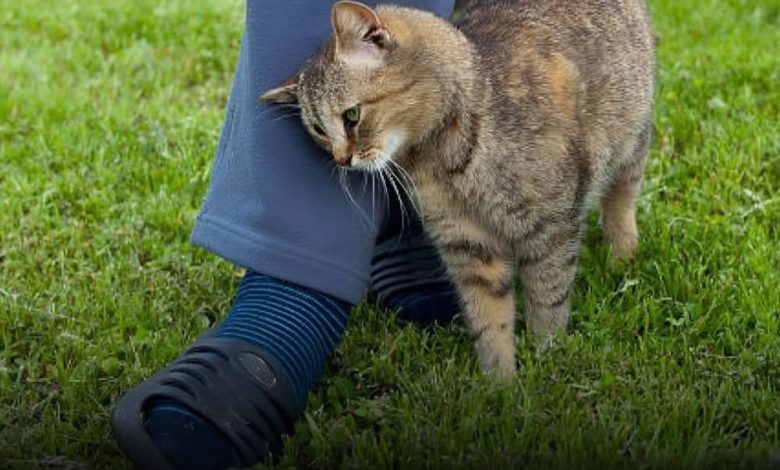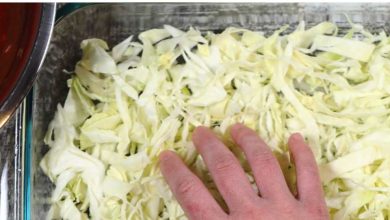Understanding Your Feline Friend: Why Does It Rub and Scratch Against You?

Cats have a reputation for being fascinating and sometimes contradictory pets. Even the most devoted cat lovers will agree that their favorite felines often display a unique “hot-and-cold” personality. While some cats are incredibly affectionate and welcoming—eagerly seeking cuddles from virtually everyone they encounter—these are often the exception. Most cat owners face the delightful challenge of trying to decode their pet’s frequently finicky behavior. However, investing time in learning the basics of feline body language can significantly simplify the process of strengthening your bond and making it easier to interact with these charming companions.
ADVERTISEMENT
One of the most frequent and perhaps confusing behaviors owners observe is the act of a cat rubbing against them, often called “bunting.” Understanding why they do this is key to appreciating your cat’s communication style.
ADVERTISEMENT
Building Trust and Affection in Your Relationship with a Cat
Establishing a trusting connection with a cat is a process that requires patience and time. Depending on the cat’s background and individual temperament, it may take several months, or even a few years, to nurture a deep and faithful bond.
ADVERTISEMENT
Because every cat is an individual, there isn’t a single, rigid “feline behavior dictionary.” The small nuances of their communication will vary based on the specific cat and the people involved. Nevertheless, certain feline instincts lead them to behave in generally similar ways when they are expressing affection, fear, aggression, confusion, or other emotions. It is ultimately the responsibility of every owner to observe and understand their own pet’s unique cues.
The Science Behind the Rub: Why Cats Bunt
The peculiar action of a cat rubbing up against humans, other animals, or objects is a distinct form of communication. Most of the time, this is a positive sign, but its meaning goes much deeper than simple affection.
Felines possess special scent glands located around their faces, their heads, and at the base of their tails. These glands produce substances known as pheromones, which the cat releases and wipes onto their surroundings. Therefore, when a cat rubs, headbutts, or “bunts” a person or an item, they are actively marking their territory with these personal pheromones.
In many instances, this behavior serves as the kitty’s way of offering a friendly greeting. As Dr. Tomeshia Hubbard, DVM, at the Alabama Veterinary Allergy and Dermatology Service, noted to Country Living, “Cats also have vibrissae or what we refer to as whiskers on their face.” She further explained that “These vibrissae serve as specialized sensory organs or organs of touch which stimulate cats to show affection towards their owners or humans.”
Thus, rubbing is not only an affectionate gesture; it is also a powerful territorial one. By applying their scent, the cat has essentially accepted this human (or object) as part of their environment and claimed them as their property. Since pheromones are volatile and tend to fade over time, cats must “reapply” them regularly to feel calm, secure, and fully “at home” in their surroundings. This is why when an owner returns home after being away, their cat may immediately rush over—not just to say hello, but to reclaim and re-mark their territory.
Is It Greeting, Guidance, or a Cause for Concern?
In some situations, bunting can be used as a way for the cat to investigate their environment. Cats might rub their heads on things as a means of exploring, similar to how human babies use their mouths to explore objects. However, cats are simultaneously trying to “size people up” and gather new information about them.
In this investigative scenario, bunting is not necessarily a greeting or an invitation for petting. It is important not to assume that a newly-acquainted kitty has taken an immediate liking to you. It is always wise to employ caution and wait for further signs before attempting to stroke or pet them.
Rubbing as a Form of Communication
Cats can also use rubbing or headbutting as a way to point or indicate their needs, much like how a human uses their fingers. This highlights why it is so crucial for owners to develop a strong relationship with their pets and meticulously learn their unique communication cues. For instance, a cat might rub against a kitchen cabinet to communicate that they are hungry, rub against the door to signal they want to go outside, or aggressively headbutt an owner to indicate that something feels wrong or they need attention.
While this kind of rubbing is usually a good thing, sometimes it can subtly indicate a larger underlying issue.
When to Consult Your Veterinarian
If your cat begins to rub or bunt aggressively against people or objects, especially when coupled with other noticeable symptoms and changes in behavior, it is essential to consult with their veterinarian.
Be vigilant and look out for common signs of illness, which may include weight loss, vomiting, diarrhea, hair loss, changes in appetite, excessive itching, or overgrooming. According to PetMD, medical conditions that can potentially lead to excessive rubbing include allergies, fleas, ear infections, intracranial disease, or a condition called feline hypersensitivity disorder.
🧐 Demystifying Other Common Cat Behaviors
Beyond rubbing, several other cat behaviors frequently confuse or amuse owners.
The Misunderstood Tail Wag
For dogs, a tail wag is a universal sign of happiness and playfulness. For cats, however, a rapidly moving tail can signify something quite different. As Evelyn Kass, DVM, a veterinarian with Pet Nutrition Doctor, explains, “The tail wag is a sign of heightened excitement, annoyance, or frustration.” She cautions that “The thrashing tail generally means ‘stop what you are doing or I am going to get angry and might bite you.‘” Alternatively, a focused, twitching tail may simply mean the kitty is getting ready to pounce on a toy or perceived prey.
Why Cats Knock Things Off Tables
No “cute cat compilation” video would be complete without a clip of a feline deliberately knocking something off a counter or table, whether it’s a water cup, a small toy, or even a laptop. This behavior can be both adorable and incredibly frustrating for owners, but it is actually a completely normal part of cat behavior. It is one of their ways of expressing boredom, playful energy, the natural urge to hunt (testing if the item moves or is “alive”), or simply a way to demand their owner’s undivided attention.
The Belly Rub Trap
When a cat exposes their belly, many people interpret this as an open invitation to pet or rub it. However, that may not have been the cat’s intention, and the owner might be met with an aggressive reaction. Dr. Sam Meisler, DVM, a veterinarian and founder of PetWellClinic, explained the nuance to Reader’s Digest: “When cats expose their bellies to us, they are saying they trust us. But when we take them up on this ‘offer’ by rubbing their bellies, they may retract it with a bite or a scratch, as it was only meant as a form of communication.” Just as in human relationships, respecting boundaries is key to fostering trust and closeness between kitties and their human companions.
By learning to interpret these unique signals—from the rub of affection and territory to the flick of a frustrated tail—you can deepen your understanding and appreciation for your unique feline friend.




